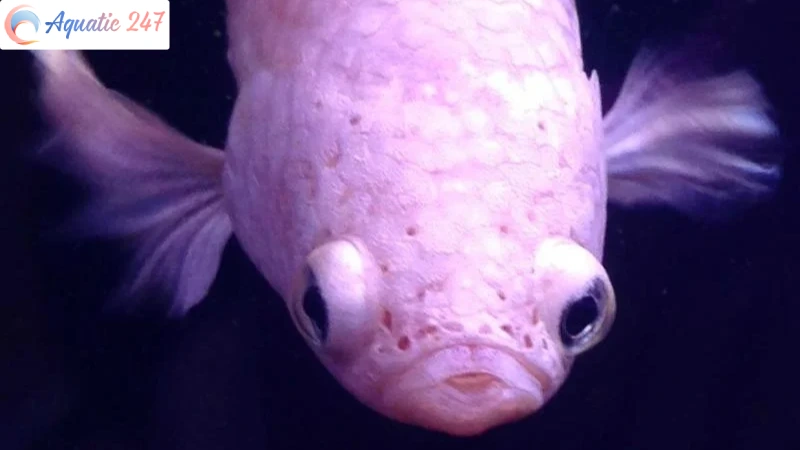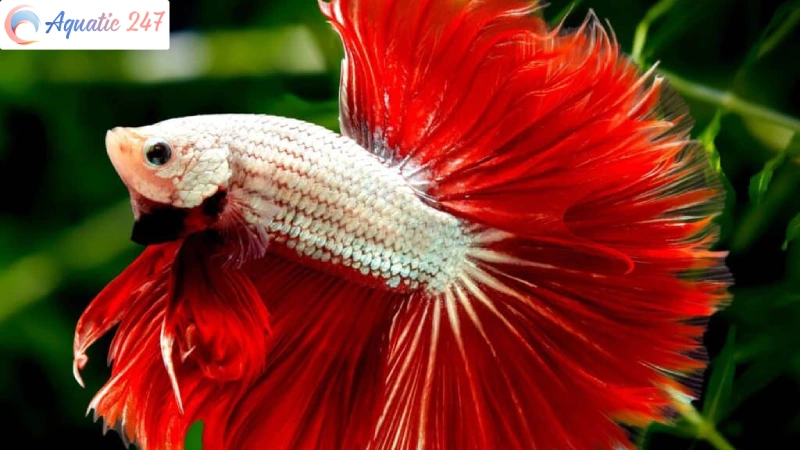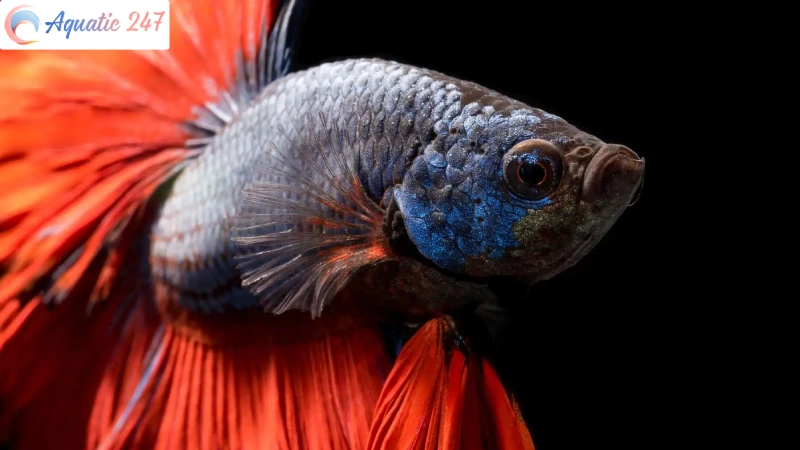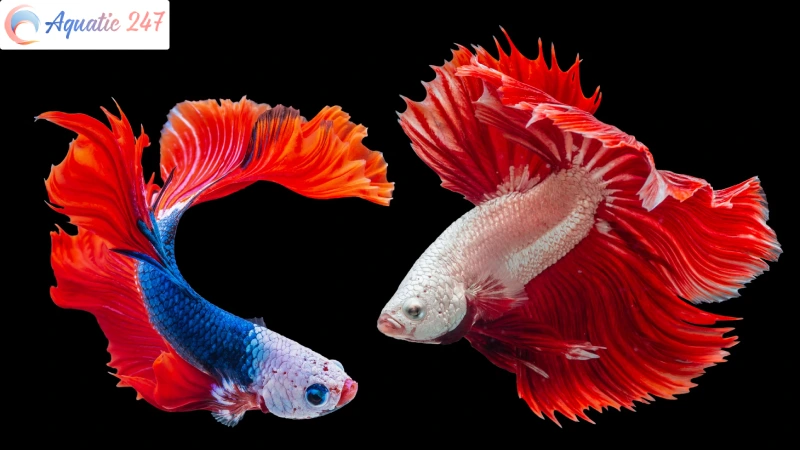Hole in head Betta is an extremely serious infection that can kill your Betta fish if not detected and treated swiftly and properly. In this post, Aquatic 247 will teach you everything you need to know to diagnose, treat, and prevent hole-in-the-head disease in your Betta.
What is a Betta fish hole in the head?
Betta fish hole in head disease is a parasitic infection by Hexamita. It is believed that this parasite starts eating away at the flesh on and around the skull, resulting in deep, pitted lesions.

The common causes of Betta hole in head
There are various reasons why your betta fish could get hole-in-the-head sickness.
Hexamita
Hole in the head Betta is often caused by Hexamita. It is generally harmless and has no negative impact on the host. However, if the Betta gets weakened or ill, the parasites might spread to the fish’s other essential organs.
The curious thing is that even researchers are not completely sure whether this parasite causes this disease or if it just takes advantage of an open wound caused by another parasite.
During the last stages of infection, the hole in Betta’s head becomes infected and fills with pus. The pus-filled pores finally rupture, leaving your poor betta with holes in its head.
Lack vitamin
Bettas are carnivorous fish that require a high-protein diet to stay healthy and grow properly. So. you should provide your Betta with varied and nutritious food.
If your fish does not receive a balanced diet, it can become deficient in vitamins, especially vitamins A and C. Both of these vitamins are known to make fish have a good immune system.
Hole in head Betta disease cannot attack Betta fish if they have healthy immune systems. On the other hand, a weak immune system will not help your Betta against this disease. At the same time, the disease will spread more quickly, even to death.
Bad water quality
Betta fish, like other fish, need precise tank conditions to thrive and avoid punctured head illness. Your betta will suffer if the water is filthy and depleted of oxygen. Stress weakens your betta fish’s immune system, making it easier for the Hexamita parasite to infect your pet.
As a result, regular maintenance is required to ensure the safety of your fish.
The optimal water parameters for Betta fish are:
- Temperature: 75 to 81 Fahrenheit
- pH: 6.5 to 7.5
- Ammonia: 0 ppm
- Nitrite: 0 ppm
- Nitrate: less than 20 ppm
- KH: 3 to 5 dkH
- GH: 3 to 4 dGH

The common signs of a hole in head Betta
If you observe your fish well, some impacts can help you identify this disease. Here are some common signs of a Betta fish hole in the head:
White fecal matter
One of the most common early indications of hole-in-the-wall sickness is a white, stringy stool, which signals a problem with the Betta fish’s intestinal tract.
This occurs when mucus is overproduced in an attempt to eradicate the disease-caused illness. Because of the excessive volume of mucus, it is expelled in the stool as white fibers.
Loss of color
Betta fish are popular pets for a variety of reasons, including their brilliant colors. A sick Betta fish, on the other hand, will appear much paler than before.
However, numerous more factors might cause your Betta fish to lose color, including stress and depression. As a result, before categorizing this sickness as a hole in the head, schedule an appointment with your veterinarian to diagnose and confirm the source of the discoloration in your betta fish.
Weight loss
One of the initial signs of a hole-in-the-head Betta sickness is loss of appetite, as it targets the intestines first. Your betta fish will stop feeding, and over time, it will become weaker.
Anorexia can be induced by various illnesses, such as ascites, bladder disease, or constipation.
Hole in the head
In the later stages of the disease, your Betta fish is likely to develop cavities on its head and body. If you begin treatment after the cavities have formed, your chances of success will be slim.
As a result, the disease should be stopped before it reaches this stage. Instead, keep a watch out for the symptoms described above and begin treatment as soon as feasible.

The treatment for Betta fish hole in the head disease
Treating perforated fish holes in the head needs patience. The most commonly suggested therapy drug:
- Dimetridazole
- Metronidazole
To know about the right dosage, you should consult a doctor before giving any medicine to fish.
The simplest way to treat your betta for this ailment is to mix the medication with food and water. If you add the drug to a tank with other plants or fish, it may hurt them. As a result, it is best to set up a separate quarantine tank for your betta fish.
If your betta fish isn’t eating, the only choice is to treat the tank water with medicine. For this procedure, you must keep your betta fish in a separate tank before administering the medicine. Consult an expert to determine the optimal dose for introducing medication to the tank.
In conclusion
Growing fish is fun for many people. However, we need to be careful regarding your Betta’s health. Furthermore, we can help fish stay healthy, without hole in the head Betta, by ensuring the required preventative measures.




